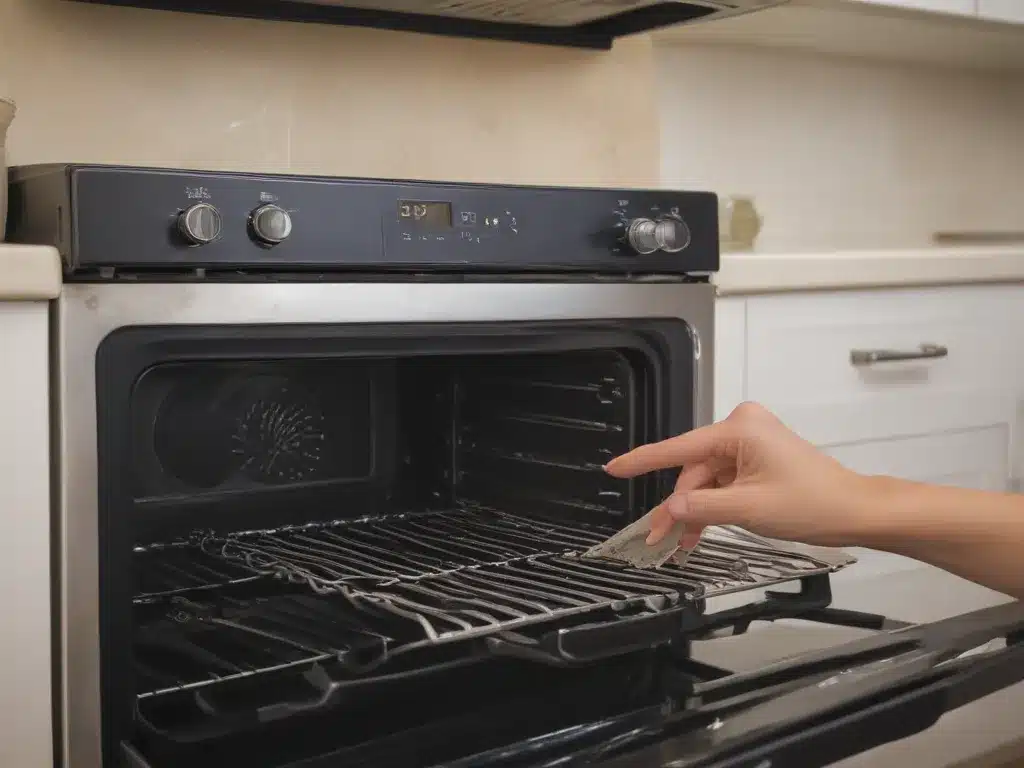Introduction
Are you tired of using harsh chemicals to clean your oven? Do you dread the strong odors and potential health risks associated with traditional oven cleaners? Fear not, because in this comprehensive guide, I will share with you a safe and effective way to clean your oven without exposing yourself or your family to toxic fumes.
Cleaning an oven can be a daunting task, but it’s an essential part of maintaining a clean and hygienic kitchen environment. Over time, grease, food particles, and other debris can accumulate inside your oven, leading to unpleasant odors, smoke, and potential fire hazards. Additionally, many conventional oven cleaners contain harsh chemicals that can be harmful if inhaled or ingested.
The Problem with Toxic Oven Cleaners
Traditional oven cleaners often contain caustic substances like sodium hydroxide, also known as lye, which can cause severe burns and respiratory issues if not handled properly. These cleaners can also release toxic fumes that can linger in your home, potentially causing headaches, nausea, and other health problems.
| Toxic Chemical | Potential Health Risks |
|---|---|
| Sodium Hydroxide (Lye) | Severe skin and eye burns, respiratory irritation |
| Ammonia | Respiratory issues, eye and skin irritation |
| Butyl Cellosolve | Reproductive and developmental toxicity |
| Glycol Ethers | Potential carcinogens, liver and kidney damage |
As you can see, many of the chemicals found in traditional oven cleaners pose serious health risks, making it crucial to explore safer alternatives.
Natural and Safe Oven Cleaning Methods
Fortunately, there are several natural and safe methods you can use to clean your oven without exposing yourself or your family to harmful chemicals. These methods are not only effective but also environmentally friendly and budget-friendly.
Baking Soda and Vinegar
One of the most popular and effective natural oven cleaning methods involves the use of baking soda and vinegar. Here’s how it works:
-
Prepare the Oven: Remove any loose debris or food particles from the oven using a damp cloth or vacuum cleaner.
-
Make the Cleaning Paste: In a small bowl, mix equal parts baking soda and water to create a thick paste. You can adjust the consistency by adding more baking soda or water as needed.
-
Apply the Paste: Using a damp sponge or cloth, spread the baking soda paste over the interior surfaces of the oven, including the walls, racks, and door.
-
Let it Sit: Allow the paste to sit for several hours or overnight. The baking soda will work its magic by absorbing grease and breaking down stubborn stains.
-
Vinegar Spray: In a spray bottle, mix equal parts white vinegar and water. Spray the vinegar solution onto the baking soda paste, which will cause a fizzing reaction.
-
Scrub and Wipe: Using a non-abrasive sponge or cloth, scrub the surfaces to remove the loosened grime and baked-on debris. Wipe the surfaces clean with a damp cloth or paper towels.
-
Final Rinse: After you’ve removed all the paste and debris, give the oven a final rinse with clean water to remove any residue.
This natural cleaning method is not only effective but also safe for your family and the environment. The baking soda acts as a gentle abrasive, while the vinegar helps to break down tough stains and grease.
Lemon Juice and Salt
Another natural and safe oven cleaning method involves the use of lemon juice and salt. Here’s how it works:
-
Prepare the Oven: Remove any loose debris or food particles from the oven using a damp cloth or vacuum cleaner.
-
Make the Cleaning Solution: In a small bowl, mix equal parts lemon juice and salt to create a paste-like mixture.
-
Apply the Solution: Using a damp sponge or cloth, spread the lemon juice and salt mixture over the interior surfaces of the oven, including the walls, racks, and door.
-
Let it Sit: Allow the solution to sit for at least 30 minutes to an hour. The lemon juice acts as a natural degreaser, while the salt provides gentle abrasion.
-
Scrub and Wipe: Using a non-abrasive sponge or cloth, scrub the surfaces to remove the loosened grime and baked-on debris. Wipe the surfaces clean with a damp cloth or paper towels.
-
Final Rinse: After you’ve removed all the cleaning solution and debris, give the oven a final rinse with clean water to remove any residue.
This method is not only safe for your family and the environment but also leaves your oven with a fresh, citrusy scent.
Additional Tips and Tricks
Here are some additional tips and tricks to help you achieve a sparkling clean oven without using toxic chemicals:
-
Consistency is Key: Regularly cleaning your oven will make the task easier and prevent the buildup of stubborn stains and grease.
-
Use Oven Liners: Invest in reusable oven liners or foil to catch spills and drips, making future cleanings much simpler.
-
Embrace Steam Cleaning: If you have a self-cleaning oven, take advantage of the steam cleaning feature, which uses high heat to loosen and burn off residue.
-
Hire a Professional: If you’re short on time or prefer to have a professional handle the job, consider hiring a reputable oven cleaning company that uses eco-friendly and safe cleaning methods.
Conclusion
Cleaning your oven doesn’t have to involve exposure to harmful chemicals and toxic fumes. By embracing natural and safe methods like baking soda and vinegar or lemon juice and salt, you can achieve a spotless oven while protecting your family’s health and the environment. Remember, consistency is key, and if you need assistance, don’t hesitate to seek the services of a professional oven cleaning company that prioritizes eco-friendly practices.
Say goodbye to toxic fumes and hello to a clean, fresh, and healthy kitchen with these safe and effective oven cleaning methods.







